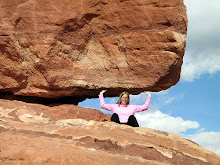 What to say about Sankofa?
What to say about Sankofa?I could write about the schedule - almost 72 hours together, half of which was on board a bus, awestruck at the sites we visited, moved by the videos we watched, especially The Color of Fear, inspired and intimidated by the conversations we had.
Or I could focus on the sites we visited: the 16th Street Baptist Church, Kelly Ingram Park and the Birmingham Civil Rights Institute; the Edmund Pettus Bridge in Selma; the John Perkins Institute in Jackson, and the Lorraine Motel in Memphis, which has been converted into the National Civil Rights Museum.
In some ways, Sankofa now seems a world away - perhaps because of the very nature of it. We are separated off, cocooned into a bus that becomes our world for several days. Our sense of time gets a little goofy, because of the long hours we spend viewing films and discussing them or the places we have visited.
As much as possible, I tried to capture sights on film and impressions on paper, which I have yet to transfer into understandable notes. Overall, I still have an overwhelming feeling akin to despair. On one hand, Sankofa was a wonderful experience, one I intend to repeat. But it is not a feel good trip. It is not like going on a weekend retreat. You do not (hopefully) come out of it saying, "oh, God is so gooood, my eyes are ooopened, now I'm awaaare, praise the Lord, and life will be better from now on."
At the start of Sankofa, a couple of the women said that they were frankly tired of having to deal with these issues; they've lived them every day their whole lives. And I can't blame them.
No matter how awaaare (of self and/or society) I might become, the truth is, I can go on with my life, enjoying the benefits of not having to be aware of my race, not worrying about being profiled by the police while I'm driving, not being looked at suspiciously by people on the street or in shops. I don't have to think about the fact that I am White.
Freedom to be oblivious to matters of race. In The Color of Fear, one man asked another what it was like to be White. The White man really had no answer. He didn't have to know.
 At the start, we were all asked how we thought of ourselves in terms of race. Several of the White people said White, or European American. I was the first person asked, and I didn't interpret the question as 'how do I label myself'; but rather what I thought about myself in terms of race. The first word that came to mind was privileged, but I was hesitant to speak that aloud until someone else did.
At the start, we were all asked how we thought of ourselves in terms of race. Several of the White people said White, or European American. I was the first person asked, and I didn't interpret the question as 'how do I label myself'; but rather what I thought about myself in terms of race. The first word that came to mind was privileged, but I was hesitant to speak that aloud until someone else did.Another woman said that she felt no identity as 'White'. I agree. There is no feeling of common identity or of shared experience, whether it be good or bad.
No, this was not a feel good time. And lots more processing has to take place.



2 comments:
I'm so glad that you had the opportunity to do Sankofa. I did it 6 years ago and it still is with me to this day. I think in terms of the experiences and things I learned while on the trip and with my Sankofa partner.
The Color of Fear is SUCH a good movie/documentary/discussion. I wish it was more easily available to the general public.
Have you read White Privilege: Unpacking the Invisible Knapsack by Peggy McIntosh? SO good!
http://seamonkey.ed.asu.edu/~mcisaac/emc598ge/Unpacking.html
I'll try to check out White Privilege (sounds awful shortened).
The color of fear is now available on DVD, but their prices are a little steep - $95 for me to buy it; about $500 for CMJ to buy it and show it on Sankofa (they're on their second VHS tape of it).
Post a Comment